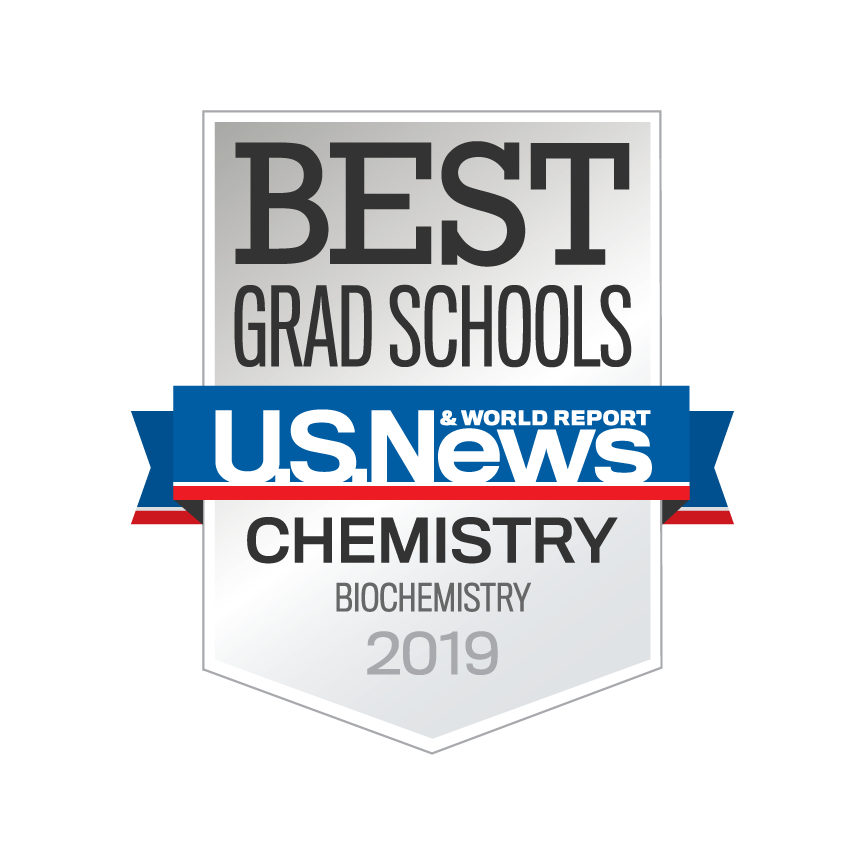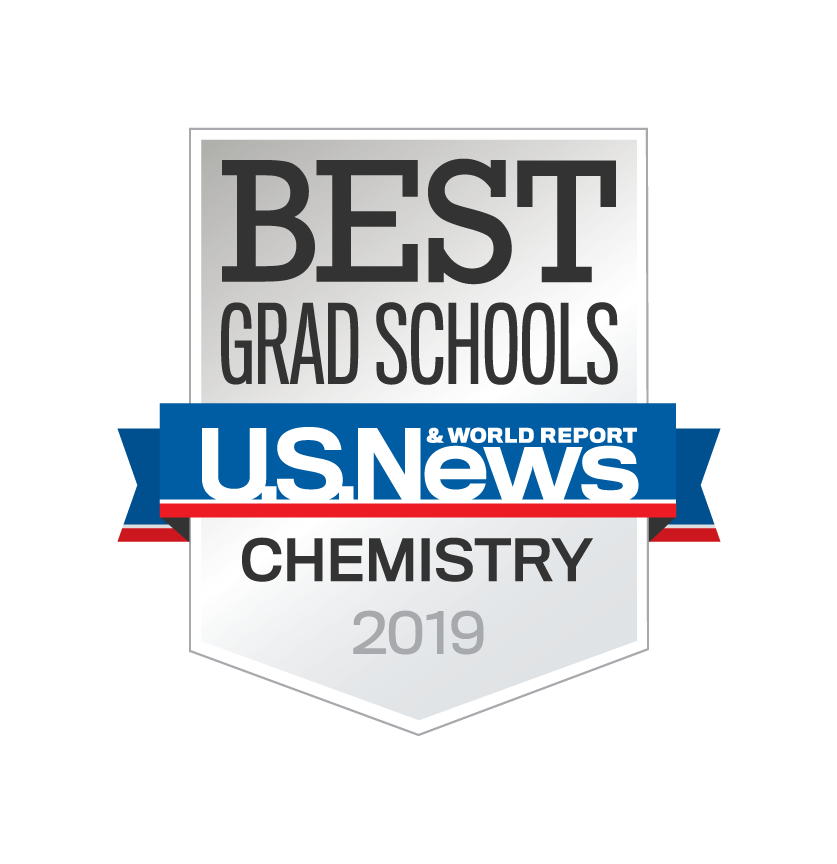Scripps Research Prepares the Next Generation of Scientists to Change the World
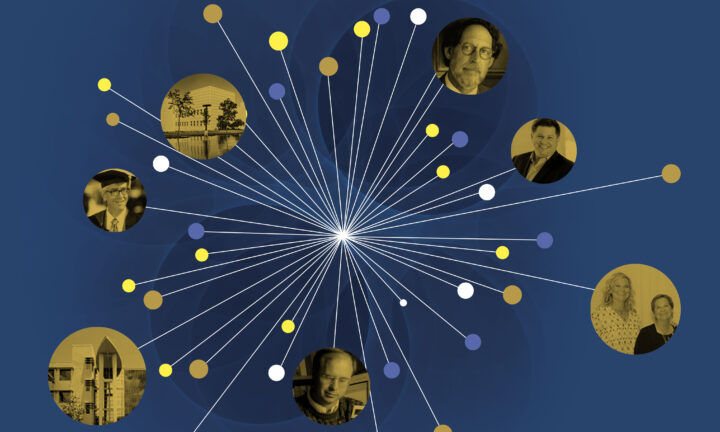
To appreciate the global impact of the educational programs at Scripps Research, you might start with a name unveiling ceremony held earlier this year. In a courtyard architecturally designed to promote scientific contemplation, people gathered to share their thoughts—and to celebrate. The Skaggs family, longtime Scripps Research supporters, had made a significant lead gift toward the institute’s $100 million endowment campaign and in recognition, the graduate program was being renamed the Skaggs Graduate School of Chemical and Biological Sciences.
The event was a homecoming of sorts, as one speaker after another recounted how the extraordinary education and training they’d received at Scripps Research had launched their highly successful careers. One, Phil Baran, PhD, completed his postdoctoral studies at Harvard before choosing to return to Scripps Research for the freedom to run his own lab and train other young scientists attracted to the institute’s vibrant environment. Another speaker, first-year graduate student Hannah Burdge, related how she’d attended an American Chemical Society seminar as an undergraduate and discovered that every person on the panel had earned a doctorate at Scripps Research. If all her heroes had studied there, why not her? She sought enrollment at once.
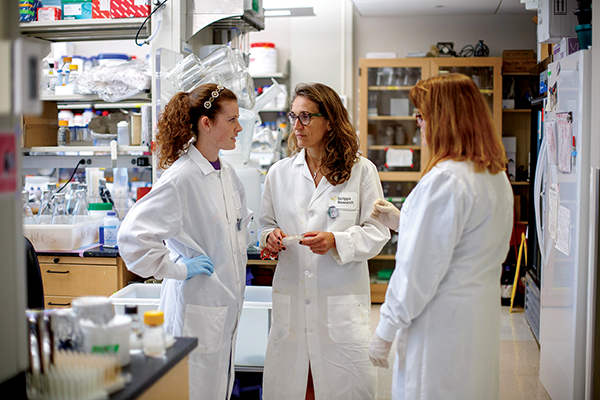
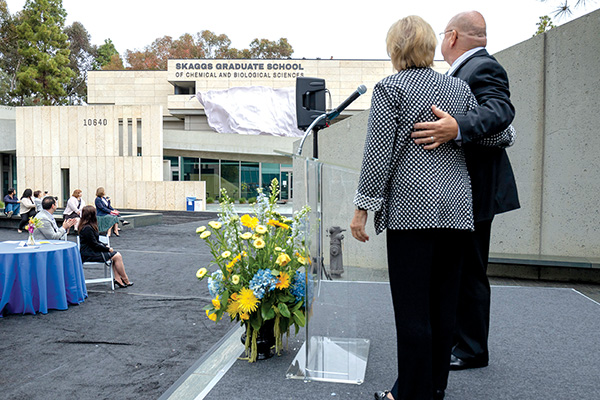
Their stories underscore the broad impact Scripps Research educational programs have on the global science community. Scientists trained here disperse to universities and research institutions and biotechnology companies around the world to continue producing critical discoveries…and influencing other scientists. In turn, their achievements send flocks of new students to this one-of-a-kind, non-university-based graduate program that continually ranks among the best in the nation. As Jamie Williamson, PhD, executive vice president of Research and Academic Affairs notes, “We now have students of students of students returning to Scripps Research.”
How did a non-university graduate school come to rival Caltech, Harvard and Berkeley? According to many, the program’s success lies in prioritizing scientific exploration over conventional regulations. “The founders were visionary,” said Baran in his speech. “Richard Lerner [former institute president] and Bernie Gilula [founding dean of graduate studies] took a clean slate approach. They extracted the essence of what matters most to earn a PhD and discarded the rest. From a cold start, this program rocketed to the top in only 10 years.”
By giving students free rein to follow their instincts, Scripps Research honored a precept of its founder. Ellen Browning Scripps, a one-time teacher who provided the funding to establish the Scripps Metabolic Clinic in 1924, was a relentlessly curious and self-taught researcher and a strong believer in life-long learning. Whenever she backed an educational institution, she emphasized thinking over knowing, stressing that “the paramount obligation of a college to its students is to train them to develop the ability to think clearly and independently.” After becoming quite wealthy, she gave away nearly all of her fortune in her lifetime to schools, churches, hospitals and research institutes, nevertheless insisting, “I hate to be called a philanthropist. What I do, I do as an investment.”
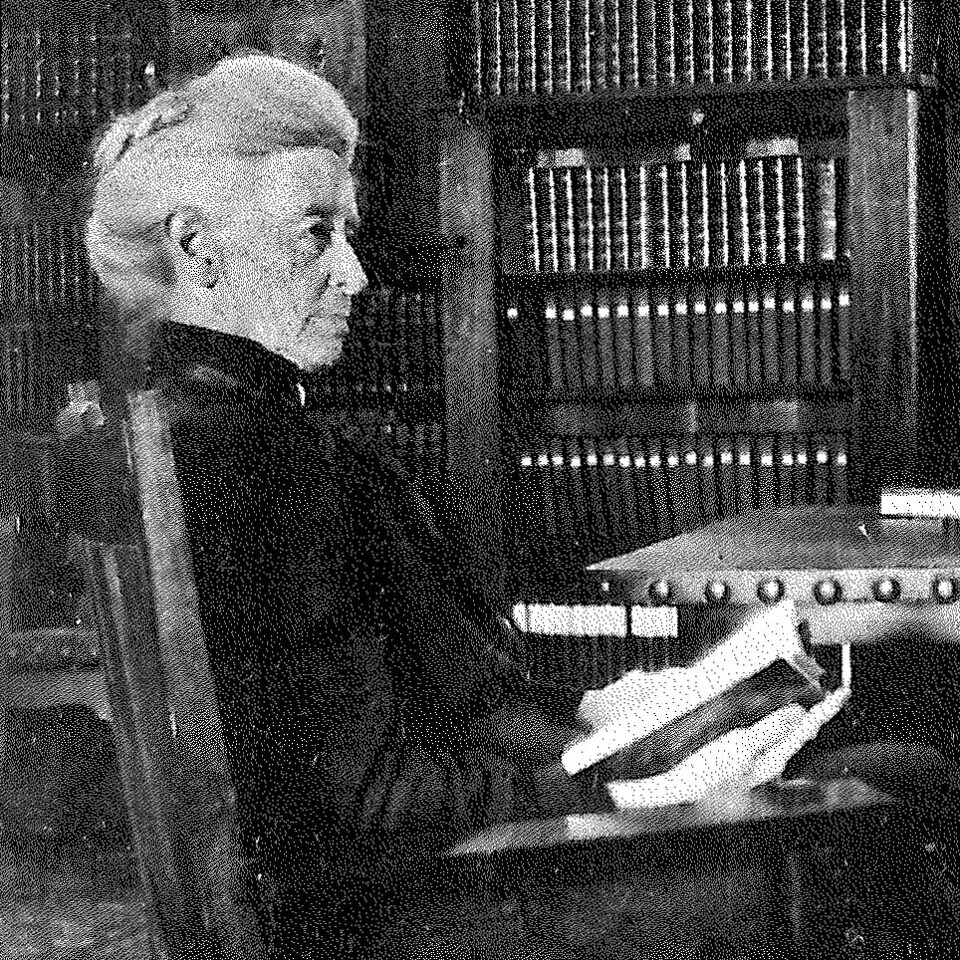
“The paramount obligation of a college to its students is to train them to develop the ability to think clearly and independently.”
—Ellen Browning Scripps
Founder, Scripps Research
The institute also adheres to Ellen Browning Scripps’ direction to train students “to think clearly and independently,” a principle that is especially evident in its unique Summer Undergraduate Research Fellows (SURF) Program. Unlike the traditional college format, where the course of study is determined by the instructor, each participant in the 10-week-long SURF Program identifies an individual interest and is then paired with a mentor who helps them design and launch a research project. After a few weeks of guidance, the student is expected to work independently. Not only do the SURF undergrads work full-time in the laboratory—receiving a stipend and housing—they participate in regular academic and research seminars. At the end of the summer, each delivers an oral presentation of his or her work at a symposium to which the entire Scripps Research community is invited. SURF participants depart this challenging program equipped with practical experience that instills confidence and provides a solid foundation for subsequent studies.
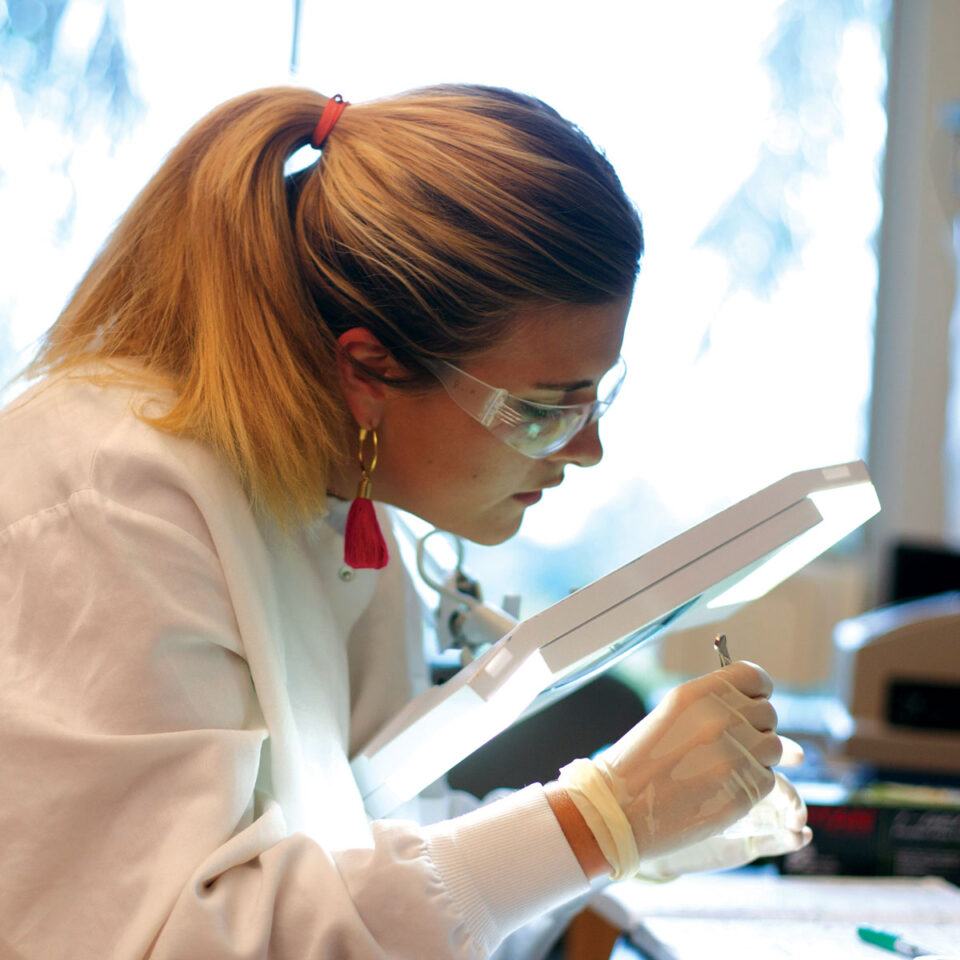
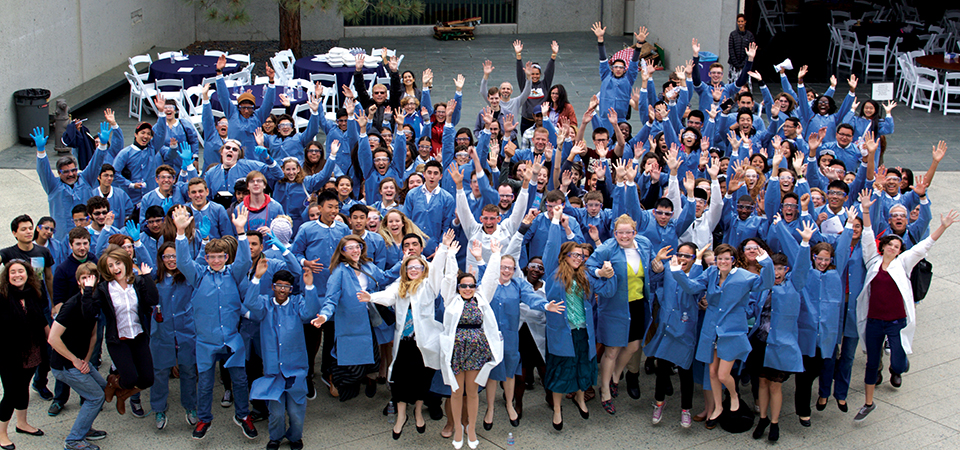
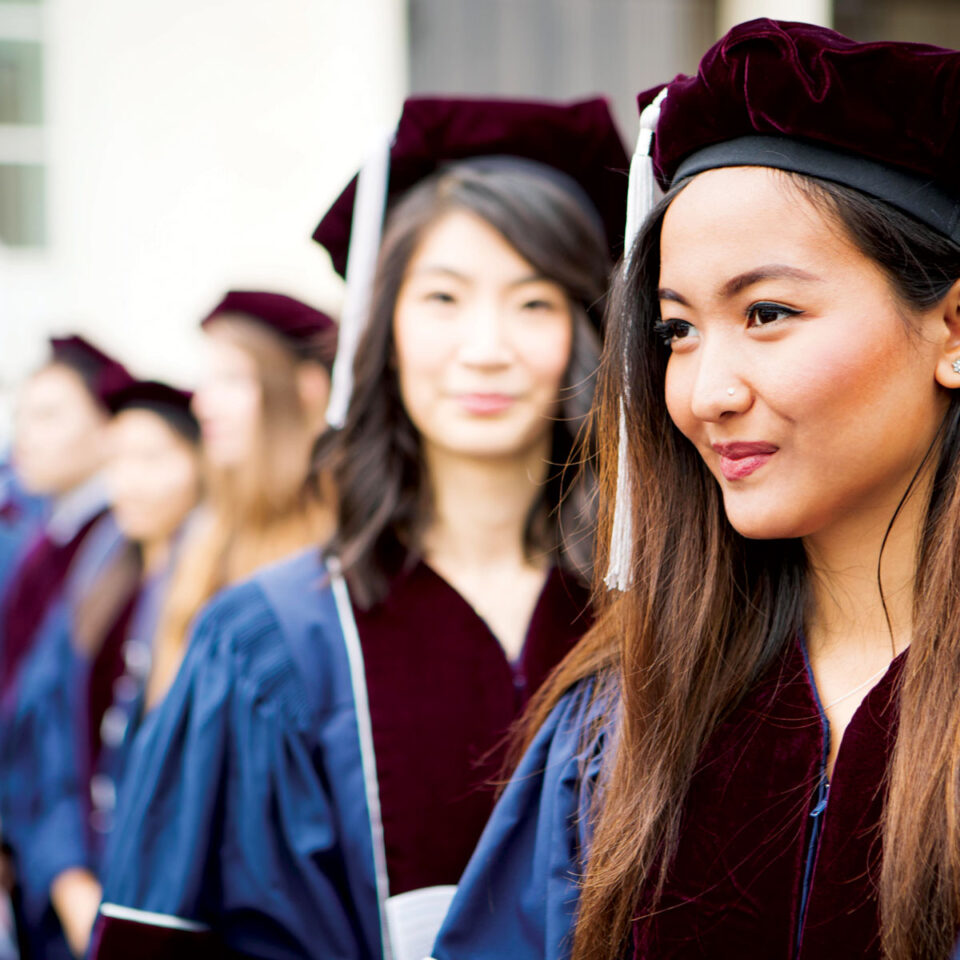
Another institute program, the Academic Year Research Internship for Undergraduates (AYRIU), invites dedicated science students to work alongside Scripps Research faculty for an even longer period. Again, the program emphasizes critical thinking, strong research skills, and the opportunity to gain greater independence and confidence. By committing to a minimum of three months of full-time work—for which they receive academic credit from their home college or university—the AYRIU interns also begin establishing their own scientific identity within the biomedical research community. That’s a valuable asset when pursuing future employment or postgraduate education.
“I have been involved in the graduate education at Scripps Research at all levels because an enhanced quality of life for society going forward depends on the next generation of scientists being able to solve major problems facing humanity.”
—Jeffery Kelly, PhD
Professor, Department of Chemistry
“By encouraging scientific interest at every age level and by bringing more diversity into the field, we enrich the future of scientific discovery,” says Dawn Eastmond, director of Graduate Studies. “To solve today’s most pressing health problems requires broad talent and deep understanding. We’re equipping the scientists of tomorrow for success.”
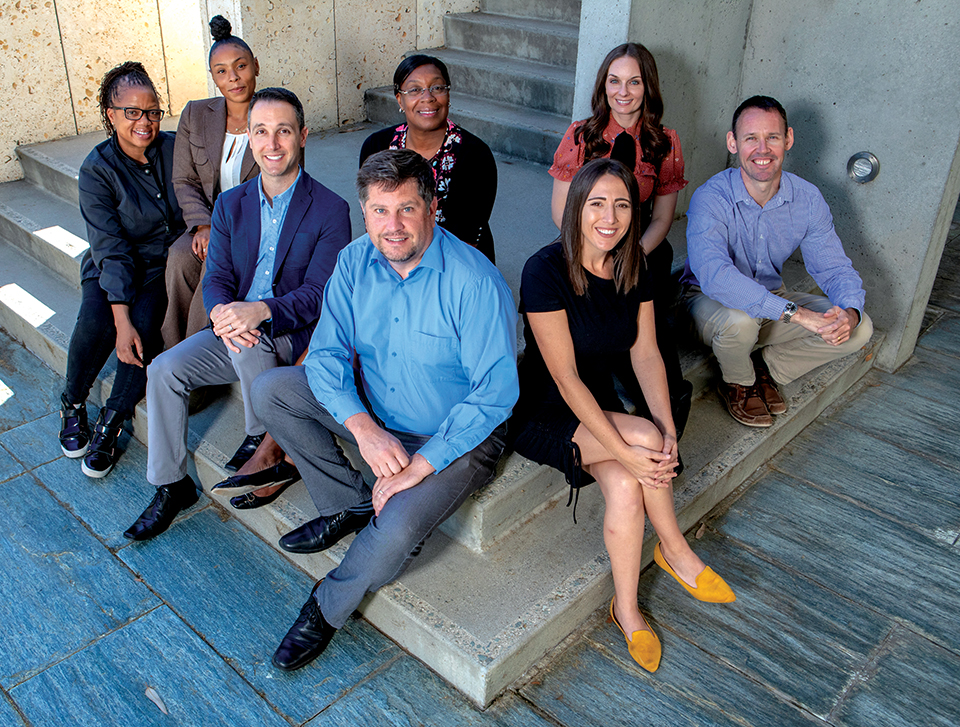
Understanding that one’s education continually progresses, Scripps Research even makes it possible for clinical physicians who have discovered a passion for research to return to the “classroom.” Eric Topol, MD, founder and director of the Scripps Research Translational Institute, epitomizes these complementary interests. Formerly the chief of cardiovascular medicine at Cleveland Clinic, he is now a Scripps Research professor in the Department of Molecular Medicine and is working to meld genomics, big data, and both information and digital health technologies to advance the promise of personalized medicine. Physicians who want to join him in this pursuit can enroll in the KL2 Clinical Scholars Program, a 2- to 3-year research-centric endeavor. Toluwalase Ajayi, MD, is one clinical scholar who is employing state-of-the-art wearable monitors to help her patients—critically ill children—manage pain and then sharing her findings with others. What’s learned in practice educates researchers and further refines therapeutics. It’s an infinite loop of understanding.
On the California campus stands a sculpture dedicated to Gilula, the educational visionary who co-founded the graduate school. Called “The Flame of Knowledge,” the 15-foot-high polished steel sculpture was conceived by artist John Safer, then a trustee of the institute, to symbolize “what education is about—an unending search […]. But you never quite get there,” he said. “So, it’s cut off at the top.” Until the next generation, newly kindled by the brilliant scientists preceding them, picks up the torch and continues the search.
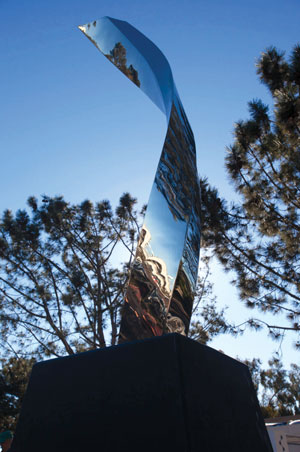
Founded by an educator and championed by educators, Scripps Research is lauded for the way its scientists transform the world. When Mark Skaggs spoke at the name unveiling ceremony about his father, L.S. “Sam” Skaggs, a food and drug store pioneer, he said, “Dad lived by two philosophies: Education is important; it makes you a better person. And work is important; always work hard and always work with the best. That’s why my family supports Scripps Research. The faculty and students here work at the pinnacle of their respective fields and they are most definitely the best. Dad had one more belief: To solve the problems of tomorrow, educate the children of today.”
That’s exactly what Scripps Research is doing—educating and empowering students of all ages to better the world through science.
1989
The Scripps Research Graduate Program in Macromolecular and Cellular Structure and Chemistry is launched. Norton “Bernie” Gilula, PhD, is its founding dean.
1993
The graduate program holds its first commencement ceremony, awarding a PhD to one student.
1999
U.S. News & World Report ranks the graduate program among the ten best in the nation.
2001
Board Chair John Diekman and his wife, Susan, endow the first summer fellowship for science teachers.
2003
Scripps Research and Oxford University establish a joint doctoral program, the Skaggs-Oxford Program.
2005
Scripps Research expands its graduate program to Florida, naming chemist William Roush, PhD, associate dean. Classes are held bicoastally.
2008
Institute Board members create the Leadership Fellows Fund to support 15 graduate student fellowships.
2010
The Summer Undergraduate Research Fellowship (SURF) Program debuts.
2015
The Florida campus announces an education collaboration with neighboring Florida Atlantic University and Max Planck Florida Institute for Neuroscience.
Funded by the Farrell Family Foundation, a Saturday Science program is launched for area students.
2016
The Skaggs family, via The ALSAM Foundation, gives $2 million to the graduate program.
In Florida, the Farris Foundation establishes an endowed graduate fellowship with a gift of $1.1 million.
2018
Following a lead gift by the Skaggs family, Scripps Research announces a $100 million campaign to endow fellowships in its graduate program.
